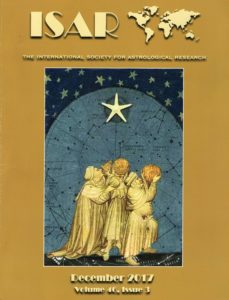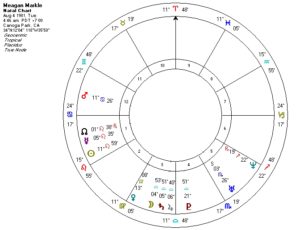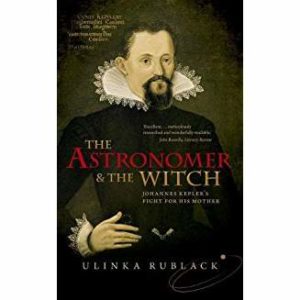Donna Van Toen gave my astrological mystery, The Precious Pachyderm, a nice review in the December ISAR International Atrologer. 
“This is an astrological mystery. The pachyderm is not a cute little baby elephant, but rather a carved jewel of great value. And it goes missing. The sleuth who finds out what happened to it is none other than Evangeline Adams. Now Adams was, in her way, a detective, but not in the way envisioned here. This is, of course, fiction, but it’s a very good fit.
The setting is in keeping with Adams’ era in Manhattan, circa 1926. And the story opens with a wealthy businessman, whose wife is Evangeline’s client, being found dead. And meanwhile, there’s the issue of the missing elephant, which Adams herself is accused of stealing. Lots of twists, turns and tangles, and lots of characters, many of whom are, well, characters. Among these are the rather unpleasant Mrs. Fiske, whose husband is murdered, Evangeline’s assistants Mary and Clara, a group of Hindu monks, a prince (the owner of the elephant) and more. All of this, plus plenty of astrology is woven together in a fast-paced and often funny mystery, written by one of the foremost chroniclers of Evangeline Adams’ life.
Christino is probably the foremost living expert on Evangeline Adams. While this work is definitely fiction, it’s credible fiction. For the most part you could see this happening. No need to suspend belief. The cast of characters, clients, staff and hangers-on, are fun. I’m sure you will smile with recognition at some of the client antics, though I never had a client show up with a dog, and of course nowadays we don’t need transcriptionists. And yes, you will relate to the astrology, too, I’m sure.
If you like mysteries and want a good read, I recommend this. I enjoyed it thoroughly!”
More on the book here.
The December issue of the ISAR International Astrologer has excellent articles by Victoria Naumann Smoot on Martin Luther, Nick Kollestrum on the Gauquelin Data, Smijana Gavrancic on North Korea and the U.S., a wonderful essay by Sandra Leigh Serio on the August eclipse and many more. Only available to members!
Also see Donna Van Toen’s website.
Buy the book on Amazon! The Precious Pachyderm (An Evangeline Adams Mystery) (Volume 1)


